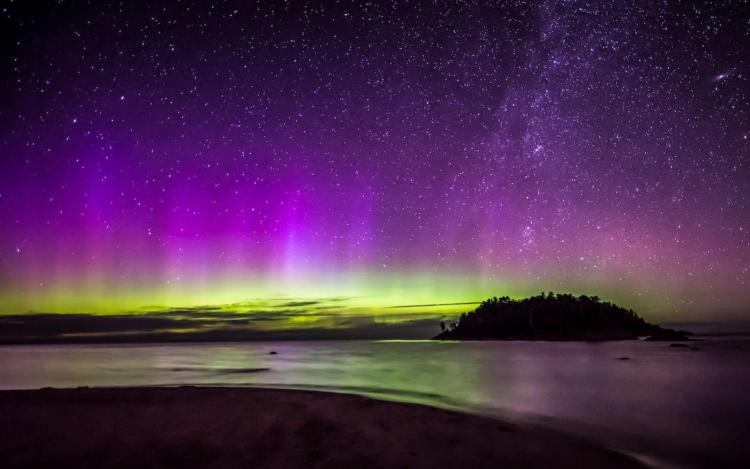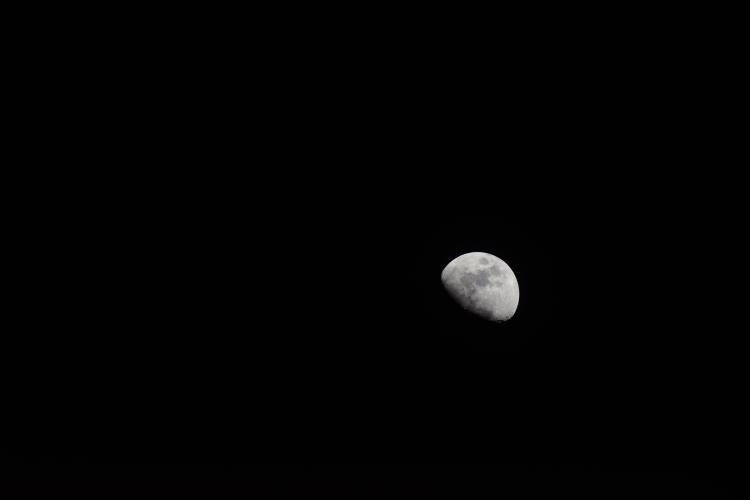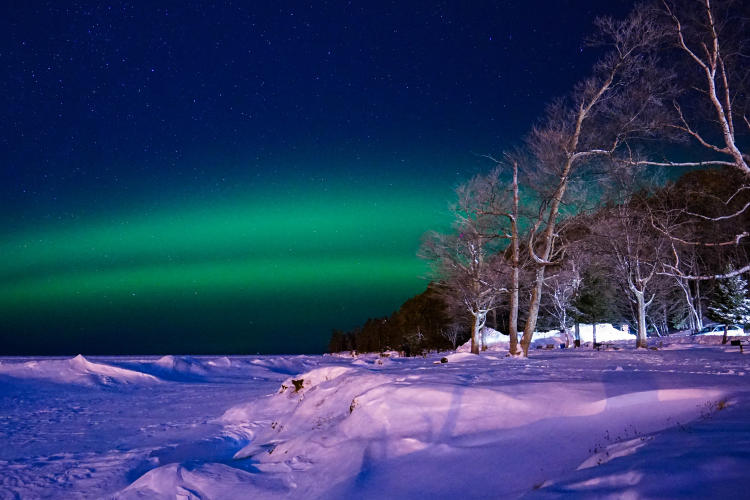Northern Lights in Marquette, MI
Is seeing the Northern Lights on your bucket list? We can’t promise you’ll catch the colorful light curtains during your stay, but we can provide useful tips to help plan your visit. Whether you check it off or not, either way, we hope you’ll enjoy the chase!
What is the Aurora Borealis?
The Aurora Borealis or Northern Lights occur with a strong solar event sending an elevated solar wind of charged particles (electrons) towards Earth. These electrons strike Earth's magnetosphere and travel along magnetic field lines towards the north and south poles where they collide with oxygen and nitrogen atoms in Earth's upper atmosphere. The atoms excite, then relax and release a photon, which is light—this is what we see as the Northern Lights.

What causes the different colors of the Northern Lights?
The Earth’s atmosphere is mostly composed of Oxygen and Nitrogen, and when heated or excited, the gasses change colors. Oxygen turns green, and Nitrogen emits hints of purple, blue, and pink. The red coloring that is sometimes seen is caused by Oxygen at high altitudes that interacts with solar particles. This red color is a sign of very intense solar activity. Hydrogen and Helium are lighter gasses present high up in the ionosphere that create colors of blue and purple. Some of the colors, other than green, are difficult to see with the naked eye.
Trying to catch the Northern Lights can be tricky, so here are some helpful tips to see the Aurora Borealis light show in the sky.
Tracking the Northern Lights
The best time of year to see the Aurora is September and March as it's more active around the fall and spring equinoxes, but it's also possible to catch a chance show during October through February.
Scientists use the Planetary K-index to track the magnitude of geomagnetic storms, also known as the KP Index. The KP Index tracks the disturbances to the Earth’s magnetic field and allows the Space Weather Prediction Center to issue alerts to those who may be affected by the disturbances. Geomagnetic storms can affect the electrical power grid, spacecraft operations, and radio signals that operate in the ionosphere.
The best way to know if there will be some action in the sky is to check the KP Index. The higher the KP number, the more likely people will be able to see the Northern Lights show. The KP Index ranges from 0-9. To see the Aurora in Marquette, a KP Index of at least 4+ is needed. To get the best view of the Northern Lights, the viewing location must be free of light pollution and clouds.
A great website for the Aurora Forecasts is the NOAA Space Weather Prediction Center:
http://www.swpc.noaa.gov/communities/aurora-dashboard-experimental

Can You Still See the Northern Lights During a Full Moon?
Make sure there is not a full moon. The full moon will be so bright that the Northern Lights will be very dim or not visible at all. However, “In the winter the moon actually rises in the NE and sets in the NW. During very active aurora displays, if the moon is behind you (when it is highest in the sky) as you look north to view the Aurora, the moon acts like a light that illuminates the foreground very nicely in your aurora photos ” says Shawn Malone of Lake Superior Photography in our Aurora Q&A blog.
How to Dress when Watching the Northern Lights
Dress for the occasion by planning ahead, wearing warm clothes, a headlamp, and knowing where you can go to have a fire, and see the Aurora during the cold fall and winter months. Marquette can have snowfall as early as the first weeks of October, so always check conditions ahead of time and dress accordingly.
Where to See the Northern Lights
Anywhere along Lake Superior where one can look towards the north can be optimal for viewing due to the lake's wide open spaces. The M-28 Waysides in Chocolay Township are easy access points in the dark. For a more adventurous viewing, Sugarloaf Mountain, and the Little Presque Isle area are excellent viewing locations for the Northern Lights.
More Aurora Resources
Aurora Q&A With Shawn Malone of Lake Superior Photo
In this quick Q&A, Marquette-based visual artist & owner of Lake Superior Photo Gallery answers all of our Aurora-based questions.... Read More
5 Tips To See The Northern Lights
Getting a photo of the Northern Lights, Aurora Borealis, or most commonly referred to as Holy smokes, what’s that in the sky?... Read More
Before you go
Camp Responsibly
Planning a trip this summer and not sure what the rules are for where you intend to camp? Here is a brief guide referencing the Michigan DNR... Read More
Fire Safety
Campfires can have detrimental impacts on an area if not managed properly. The Leave No Trace organization advises the best practice is... Read More
Respect Marquette County
Follow these Leave No Trace principles when visiting to keep our forests, lakes, and natural spaces as special as when you found them.
Keep exploring
Lake Superior
Lake Superior in Marquette, MI, offers stunning natural beauty and outdoor... Read More
Lighthouses
Travel to Marquette County and visit some of the best historical... Read More
Attractions
Marquette County sits on the south shore of Lake Superior, the largest of... Read More











